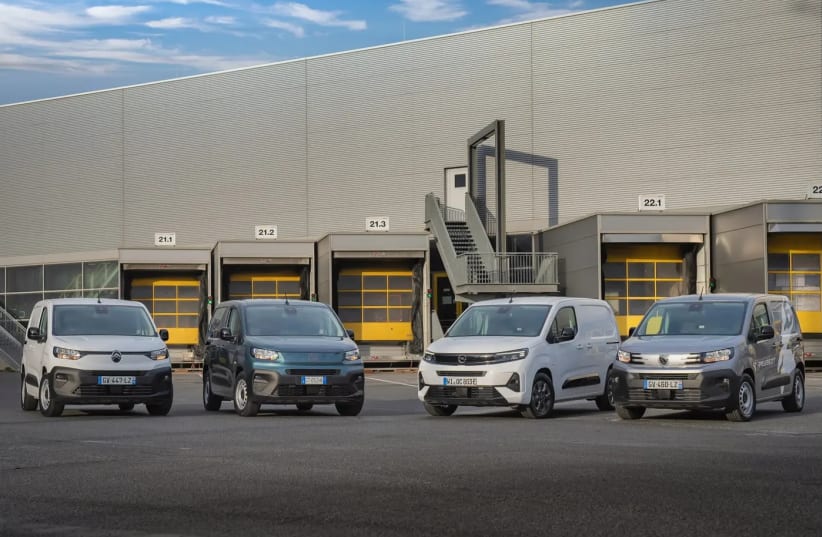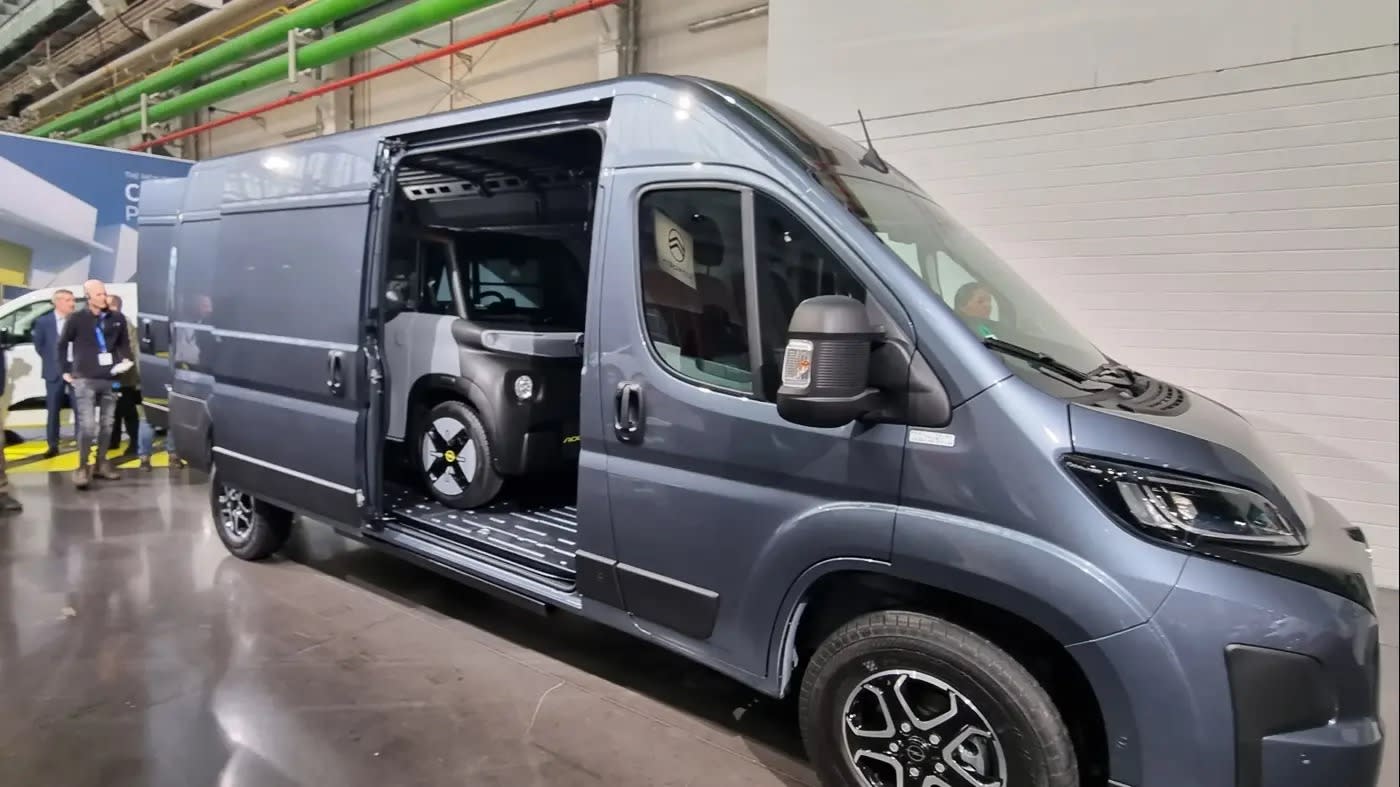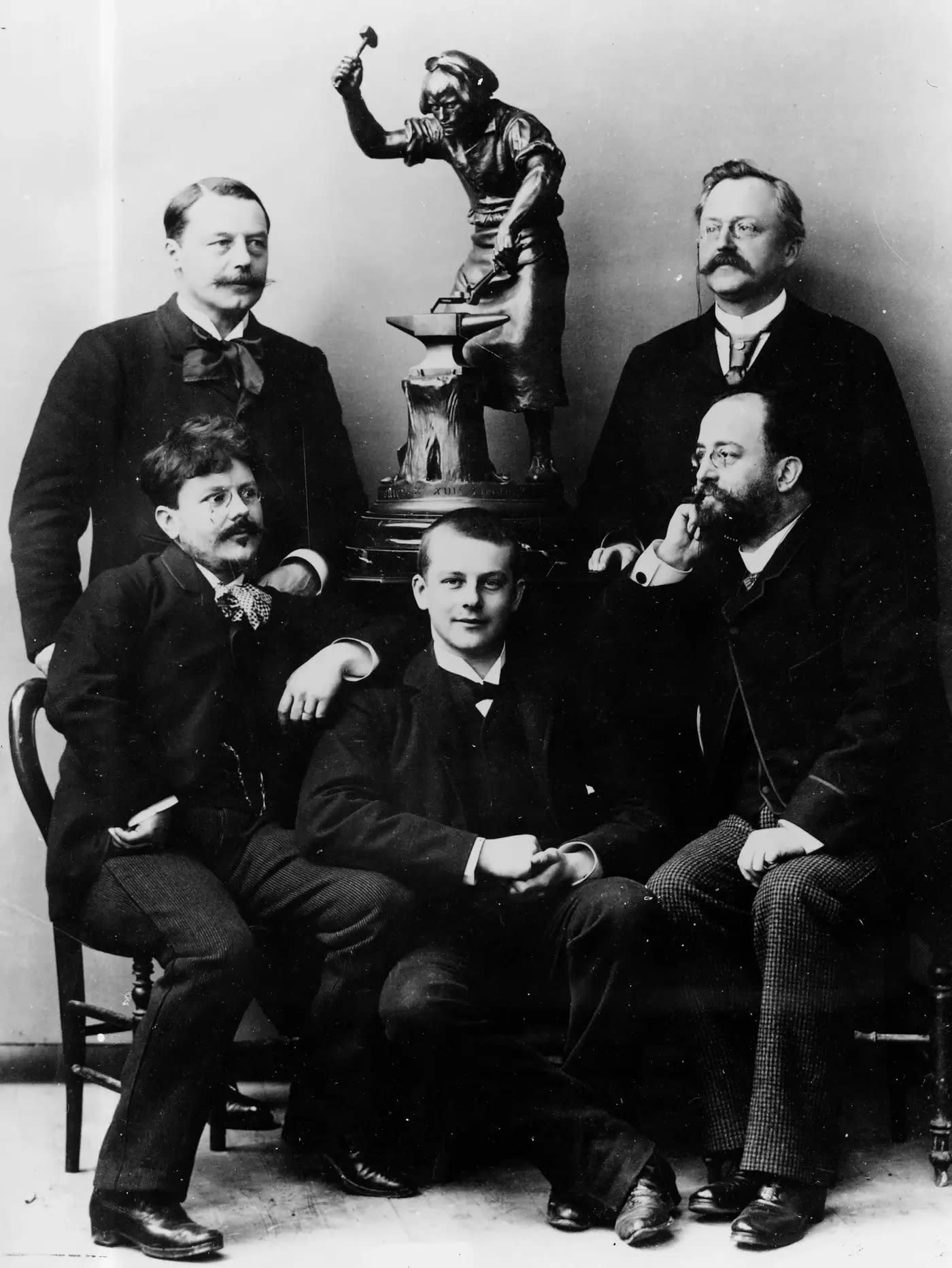They stand side by side in one hall, at one media event: Peugeot, Citroën, Opel, and Fiat models. Once competitors vying for control of the European market, today four sibling brands of the Stellantis group. The event: the unveiling of the updated commercial models of the group in Europe.
I wonder what Armand and Eugène Peugeot, the cousins who presented the tricycle at the 1889 World's Fair in Paris, based on their family's bicycle business, would think of this display. Three years later, they already launched the first car with a Daimler engine. They later separated in business, when Armand founded Peugeot Automobile to accelerate the revolution.
But family is family, and it is precisely the great-granddaughter of Eugène, Kassbah Peugeot, who sits in front of me. The deputy head of the commercial division of Stellantis is stated on his business card, and it also includes the American Ram division that produces and sells in North America a version of the van of the division, Fiat Ducato/Peugeot Boxer/Citroën Jumper/Opel Movano, under the name Ram Pro Master.
After previously serving as a product manager at Peugeot and later at Citroën, today the 59-year-old Peugeot is involved in commercial businesses. But on his LinkedIn page, alongside his business degree, he explicitly states: Car Guy.
What's the point when I can buy the exact same model in Israel under four different logos? "Stellantis is a merger of Peugeot, Citroën, and Fiat-Chrysler, each with significant capabilities in the commercial vehicle sector. The commercial sector is very significant for Stellantis: more than a third of the revenue and even more of the profit comes from the commercial division. We are number one in Europe and South America, and third in the United States. We expect to be number one in the world by 2027. The importance of the commercial sector in Stellantis will only grow: a private car driver may sometimes prefer other means of transportation. You can drive to the office in an electric scooter, but you can't transport cargo with it. The ability to transport goods and deliver them to customers is becoming increasingly critical for businesses".
When a customer of Bellingo understands that Fiat Doblo, Peugeot Partner, and Opel/Vauxhall Combo are exactly the same thing, they will buy the cheapest option. "But they will still buy it from us. It's an asset to hold several parallel brands, not a headache. Customers choose commercial vehicles primarily based on loyalty to the product and brand. That's how we can have the strongest brand in every major market. In France, it's Citroën, in Germany it's Opel, in Italy it's Fiat, and in Britain it's Vauxhall".
There is another version for each model like this, with a Toyota symbol, within the framework of cooperation between the manufacturers. In other areas, the Japanese are tough competitors, but commercially they are eager to buy from you. "We have a long-term partnership throughout the entire range of models. It's a win-win for both sides".
Ram has a very strong presence in its pickups in North and South America. Why don't you have pickups in Europe? "There are several types of pickups. The American market prefers larger pickups. We are considering entering the 1-ton pickup market (like Toyota Hilux and Isuzu D-Max - ed.), which is the most popular in the world, and can be found in every market. An electric pickup like this could be very suitable for Europe, as well as for other markets, due to air pollution restrictions for vehicles. We have not made a decision on this yet".
In South America, you have small, inexpensive and popular pickups, like the Fiat Strada and Toro, and the Dodge Ram 700, which is similar in size to the Ford Maverick that is doing very well in the USA. Is there a chance we will see them in the USA or Europe? "We are considering developing electric versions of two Fiat models, which could be relevant for other markets. The Ram 700 is currently only intended for South America. We are also exploring other possibilities for it, and examining how we can expand with the current model range".
Electric is the buzzword today even in the commercial market. Ram has already unveiled the electric 1500 REV and the 1,500 Charge Plug-In in the USA, which will enter serial production next year. But for Europe, it is currently launching diesel-electric versions for the Ducato and Jumper, after previously unveiling diesel versions for the Citroen Jumpy and its counterparts three years ago.
Launching versions of hydrogen fuel is a good headline for communication, but this field is full of question marks: the tools are expensive, the fuel itself is expensive, there are too few stations, and repairing them in these vehicles with full responsibility costs a fortune. Is this real business or a public relations exercise?
"Interesting question. I was asked exactly these questions a few years ago about electric versions, if they have a future. Today they already comprise 10% of the market, allowing us to capture 40% of the commercial electric market in Europe. We were ready early and succeeded. Now we do it with hydrogen. It is an addition to electric vehicles, with more range and quick refueling".
If you can find a hydrogen refueling station, that is.
"Even electric charging stations were not many at the beginning. This market will also grow, we started with a medium van and now a large one. In France, in the Alps region, the local government set up a relatively large number of hydrogen stations and also provides substantial subsidies. The initial price of the hydrogen version of the Jumpy was 130,000 euros. Today the price is already at 75,000 euros, and the local government subsidizes 37,000 euros of them. Electric vehicle sales also rose at the beginning thanks to subsidies, which helped increase production volume and lower prices. This will also happen with hydrogen versions. We are preparing for the future. Electric vehicle customers no longer ask us where to find charging stations, as there are already many, or about charging times, because you can charge 80% of the battery in 30 minutes".
Opportunity to ask: Can you charge fast to 100% every day? There are claims that it damages battery life."There's no problem with that. We monitor the batteries. It's a concern that is fading away".
In the industry, they talk about a slowdown in the growth of electric vehicle sales. Do you see that too?"We feel it too, but as always, it also depends on government support and the ability to offer competitive prices. So we are working on the ability to offer customers the option to convert their existing vehicles to electric. They can come to us with a diesel car that has already accumulated mileage, and we will replace its engine and gearbox with a battery and electric drive system. This will allow customers to get zero emissions from the exhaust at a much more accessible price".
Despite all our talk about electric and hydrogen, do you even have gasoline versions in some commercial models?"We continue to sell versions with thermal engines to meet changing demand. Diesel and gasoline still account for 90% of sales. It's still the main business, but it will change".
You even presented a cargo version for Citroen Ami and the small electric Opel Rocks. Is there demand for that?"Yes, see how flexible it is", Figo points to an Opel Movano parked behind him with his cargo compartment loaded with Opel Rocks. "We want to offer customers all technological options. These vehicles have a range of 75 km, are cheap, and can be very suitable for emissions-free deliveries in the city. We are already prepared if there is a shift in the market towards such vehicles".
The success of Stellantis has caused competitors to disappear from the market, or to join forces: Volkswagen and Ford, competing companies, are buying each other commercially. Nissan relies on Renault models in Europe. Hyundai and Kia, which have strengthened significantly on the continent, do not bother to offer commercial models there. Competition is starting to come from elsewhere.
Are Chinese manufacturers not threatening your dominance in the field? "The Chinese are also entering the commercial market. They are already on the podium in terms of sales in countries like Peru, Colombia, Chile, and Ecuador. They are also trying to enter Europe, mainly Germany and Britain. We are ready for this challenge. It is not just the product, it's also the quality, service, dealer chain, and workshops. We will remain aggressive and ready".
You have a very demanding position in the industry, surrounded by cars and talking about them since you were a child. Doesn't this field bore you already? "It will never happen. I don't exactly know when my interest in this field started, probably the moment I was born, which was a long time ago now. But it is a true passion. For cars and commercial customers. My energy is still there".
Have you ever considered a different career? "Choosing to work in the automotive industry was my personal choice. An adventure that is still ongoing. I am the eighth generation in the family business, when the automotive sector in Piedmont began at the end of the 19th century, over 120 years ago. It is great to be a part of it. But in that, I am no different from any other manager in this company".
The writer drove a Peugeot, Citroen, Fiat, and Opel in Germany.


